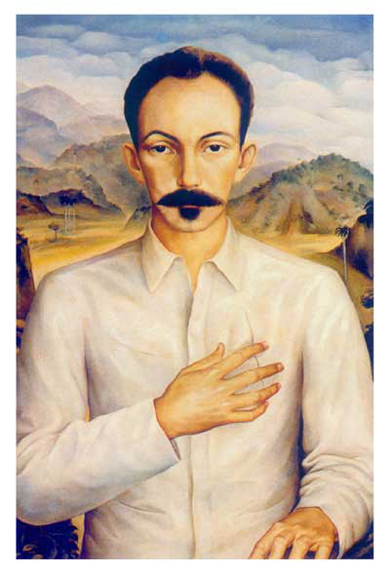3.8 José Martí (1853 – 1895), a succinct overview of his literary work

José Martí’s literary expression spanned a variety of genres; in fact, it constitutes a wealth that transcends generic pigeonholing and even the framework of so-called literary movements. The political action of a social visionary like Martí does not hinder his aesthetic creation but rather constitutes a fertile and authentic lifeblood in his texts, which resolve what might seem a contradiction if one ignores the fact that Martí’s political stance was rooted in genuine philanthropy, also evident in his aesthetics.
Even with the diversity of genres he cultivated—journalism, oratory, essays, poetry, and others—without neglecting the high lyrical tone of his letters, Martí’s style is entirely distinctive, his undeniable command of language and lyricism not confined exclusively to verse but permeating all his prose work, and the magnetic magic of his discourses; even journalism in Martí’s prose achieves an artistic stature perhaps unparalleled.
Juan Marinello went so far as to describe him as a graphomaniac, in that one can appreciate the genius’s compulsion to write down everything that crossed his mind, with a wealth of knowledge and a depth of ideas, not devoid of emotion, evidencing what he advocated… about what a poet should do “think high, feel deeply and speak clearly”, his texts, however, have allowed his exegetes to cogitate and excogitate for more than a century without all the light having yet been shed on these, undoubtedly of tremendous intellectual and aesthetic luminosity.
The controversy over his full adherence to modernism has not entirely ceased; this depends largely on the conception one has of the movement and its innovative nature beyond the formal plane. In this sense, the Maestro touched the most intimate chord of modernism and what it could mean for Latin America’s encounter with its own culture.
Martí’s originality was not just a matter of the period but is perceived from a contemporary perspective, despite the fact that he had some followers – not numerous, since his texts resist mimesis, as one cannot copy such a unique intellectual attitude – and the fact that his life experiences enriched and provided new nuances to the development of his work in verse and prose.
Immersed in the revolutionary struggle, he died at the height of his intellectual maturity, already with a notable literary career that demonstrates how one can achieve ecumenism from a deep nationalism, uniting the expression of the intimate with the social latents that strained his entire human fiber.








